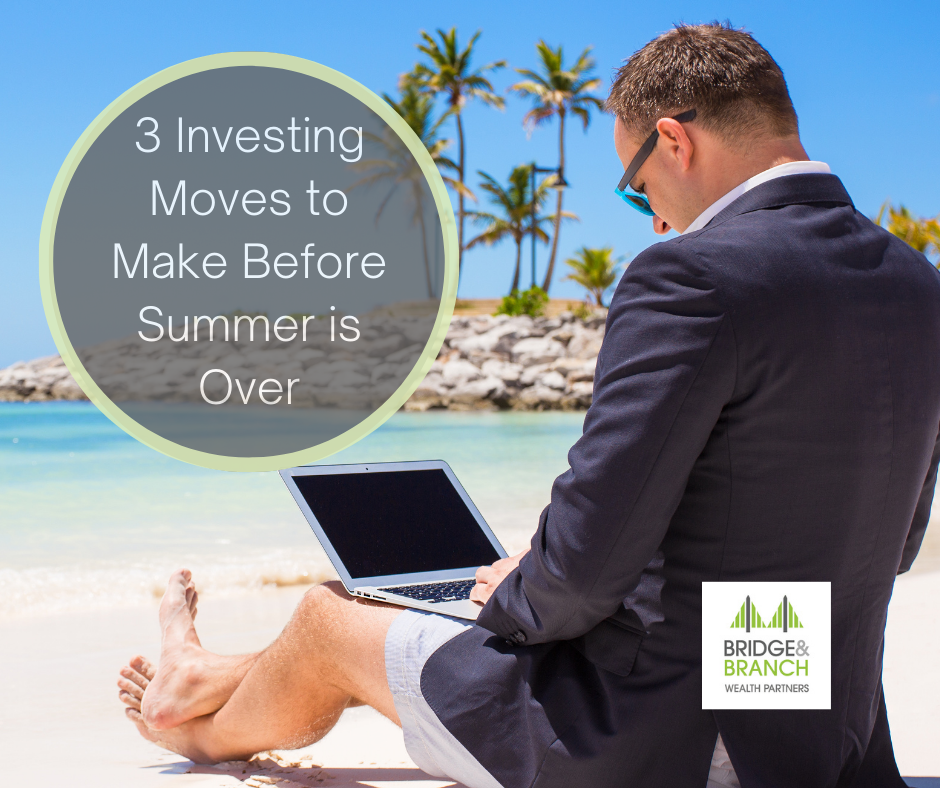Many investors still adhere to the old adage—”sell in May and go away”—while others remain fully invested even as the summer heat waves begin. What goes unsaid is that if your asset allocation accurately reflects your risk tolerance, you won’t need to base your investment decisions on the calendar. Here are three key investing moves to make before the summer ends.
Review Your Asset Allocation
Market volatility can often provide the first clue that you’re just not comfortable with your current asset allocation. If you’re fully invested in stocks and the idea of a 20 percent (or higher) drop has you considering pulling your funds out of the market, it may be worth investigating whether you should diversify into a few more conservative options. On the other hand, if you’re dissatisfied with your rate of return when compared to the broader market indexes, you may want to invest more aggressively.
Your ideal asset allocation will depend on a few factors:
- Your risk tolerance
- Your investment horizon
- Your investment purpose (e.g., retirement, paying for a child’s college, a down payment, a wedding, or long-term savings)
For short-term investments, it’s often advised to keep your funds in a more stable set of assets, like high-yield savings accounts, certificates of deposit, or government bonds.1 Meanwhile, more long-term investments are often best kept in the market, where they can take advantage of compounding returns.
Take Full Advantage of Your Retirement Plan
If your employer offers a 401(k) match and you’re not contributing enough to take full advantage of it, this is something you should change today. Retirement matches are essentially “free” money, as they aren’t calculated as part of your gross salary. By contributing to retirement up to your employer’s match, you’ll be able to basically double your retirement contribution with minimal impact on your paycheck.
And for those who would like to start contributing more to their retirement accounts, setting aside a certain percentage of every raise can be a way to increase retirement savings without reducing your pay.
Get Rid of Losing Stocks
Although many claim you don’t really lose money on a stock until you sell it at a loss, there’s an opportunity cost that comes when you tie up money in a stock for years without seeing a positive return. At least once a year, it’s a good idea to review your investments, identify any “losers,” and consider whether it’s time to finally let them go.
Footnote 18 best short-term investments in April 2022, Bankrate, https://www.bankrate.com/investing/best-short-term-investments/
Important Disclosures
The opinions voiced in this material are for general information only and are not intended to provide specific advice or recommendations for any individual.
Investing involves risks including possible loss of principal. No investment strategy or risk management technique can guarantee return or eliminate risk in all market environments.
Asset allocation does not ensure a profit or protect against a loss.
There is no guarantee that a diversified portfolio will enhance overall returns or outperform a non-diversified portfolio. Diversification does not protect against market risk.
All information is believed to be from reliable sources; however LPL Financial makes no representation as to its completeness or accuracy.
This article was prepared by WriterAccess.
LPL Tracking #1-05268284

